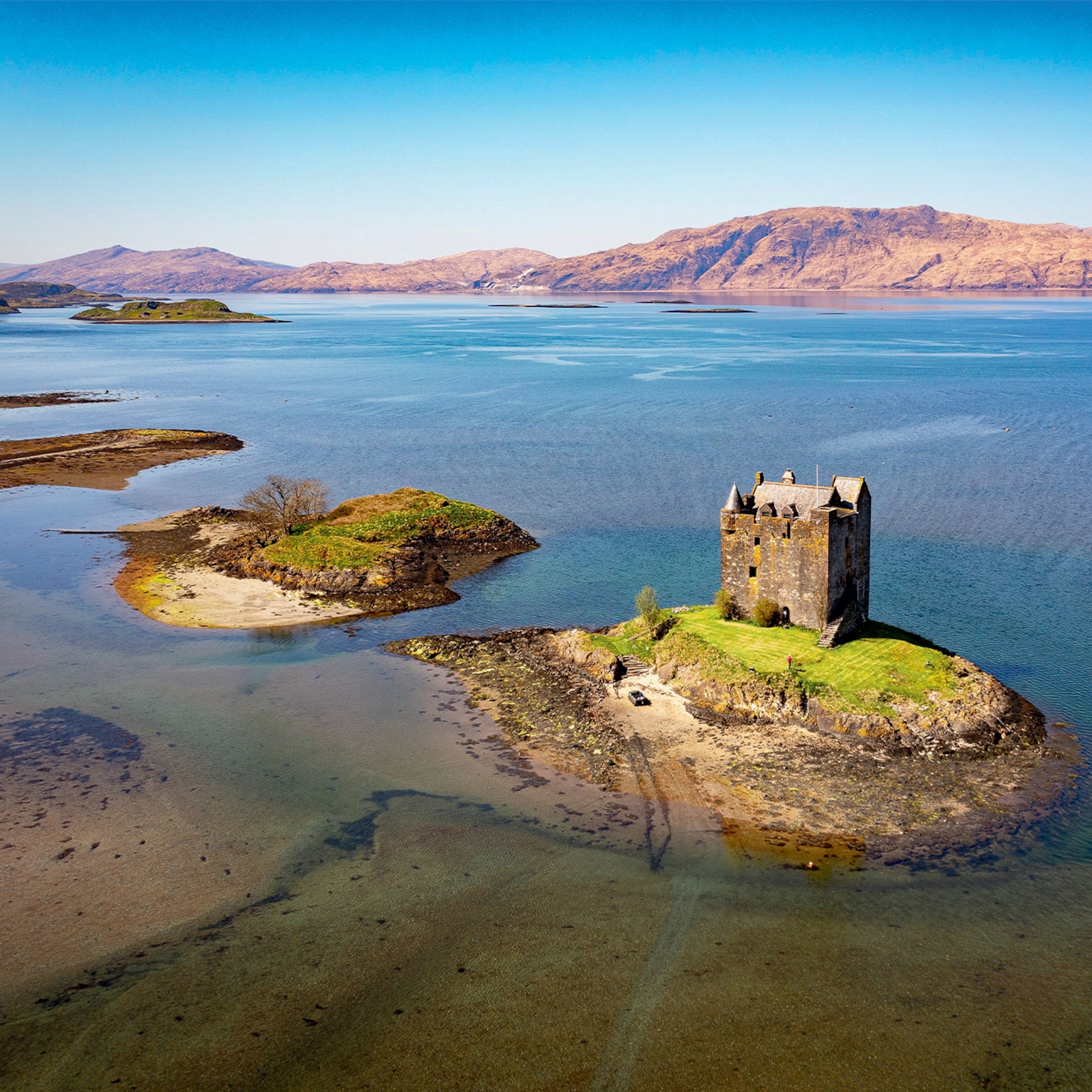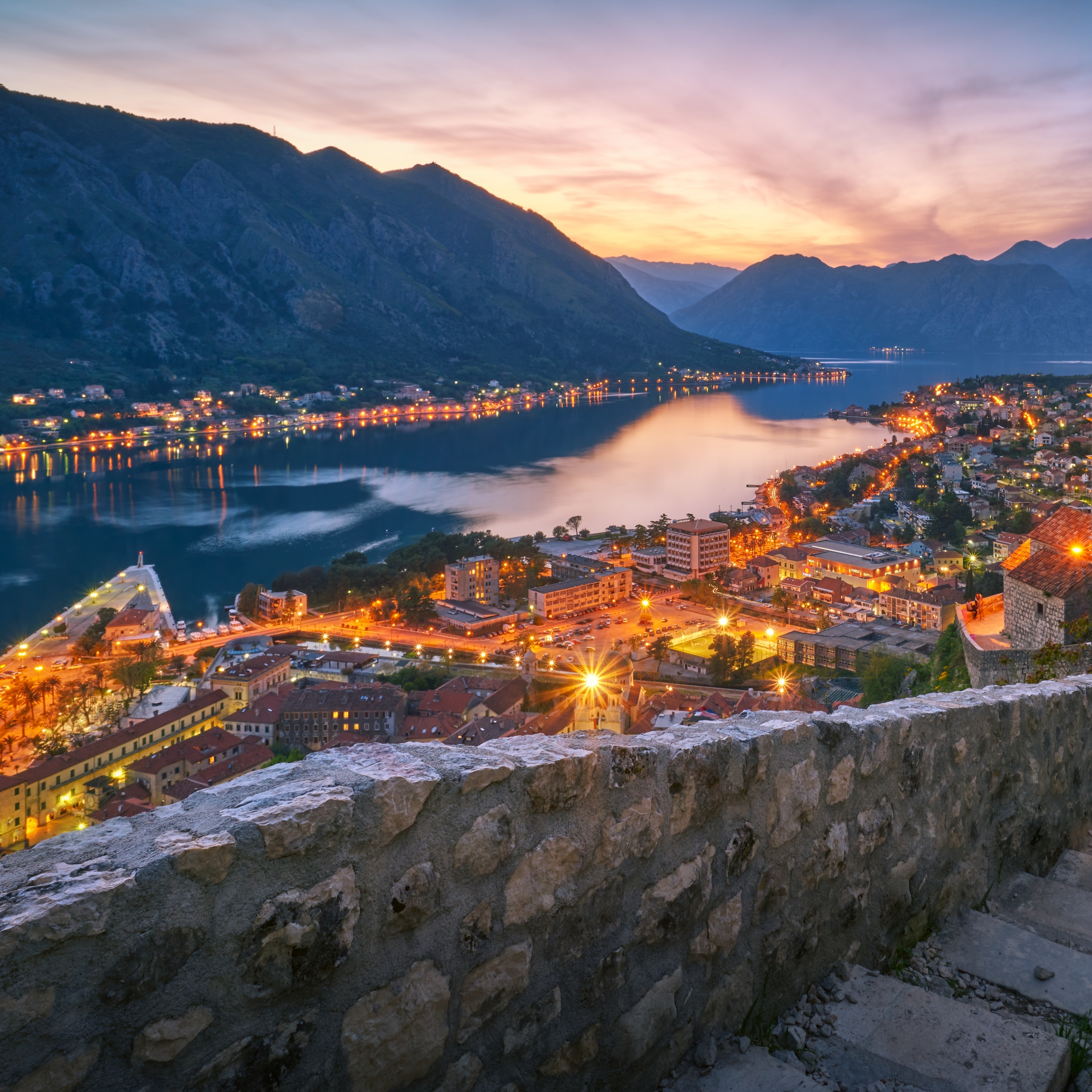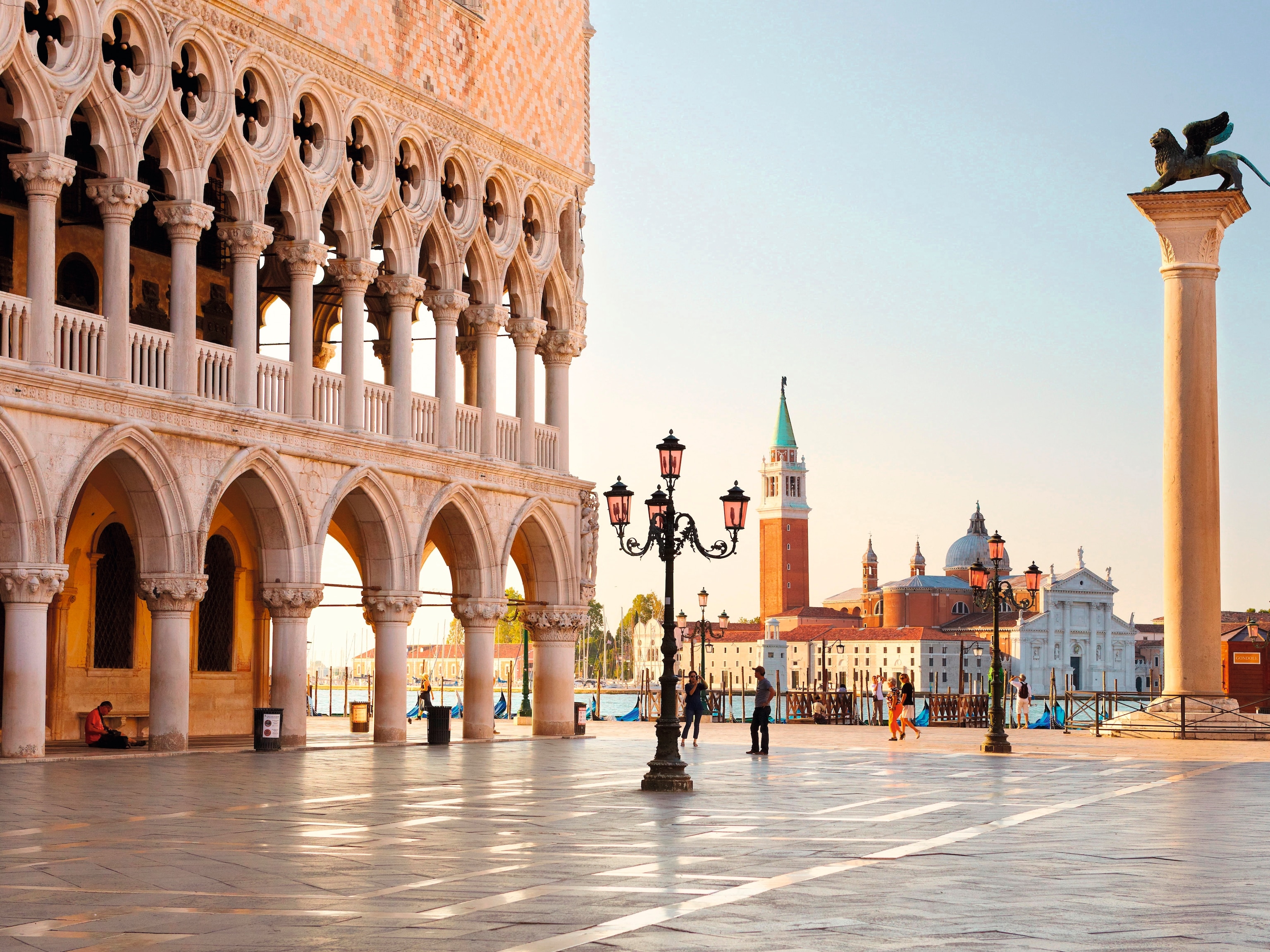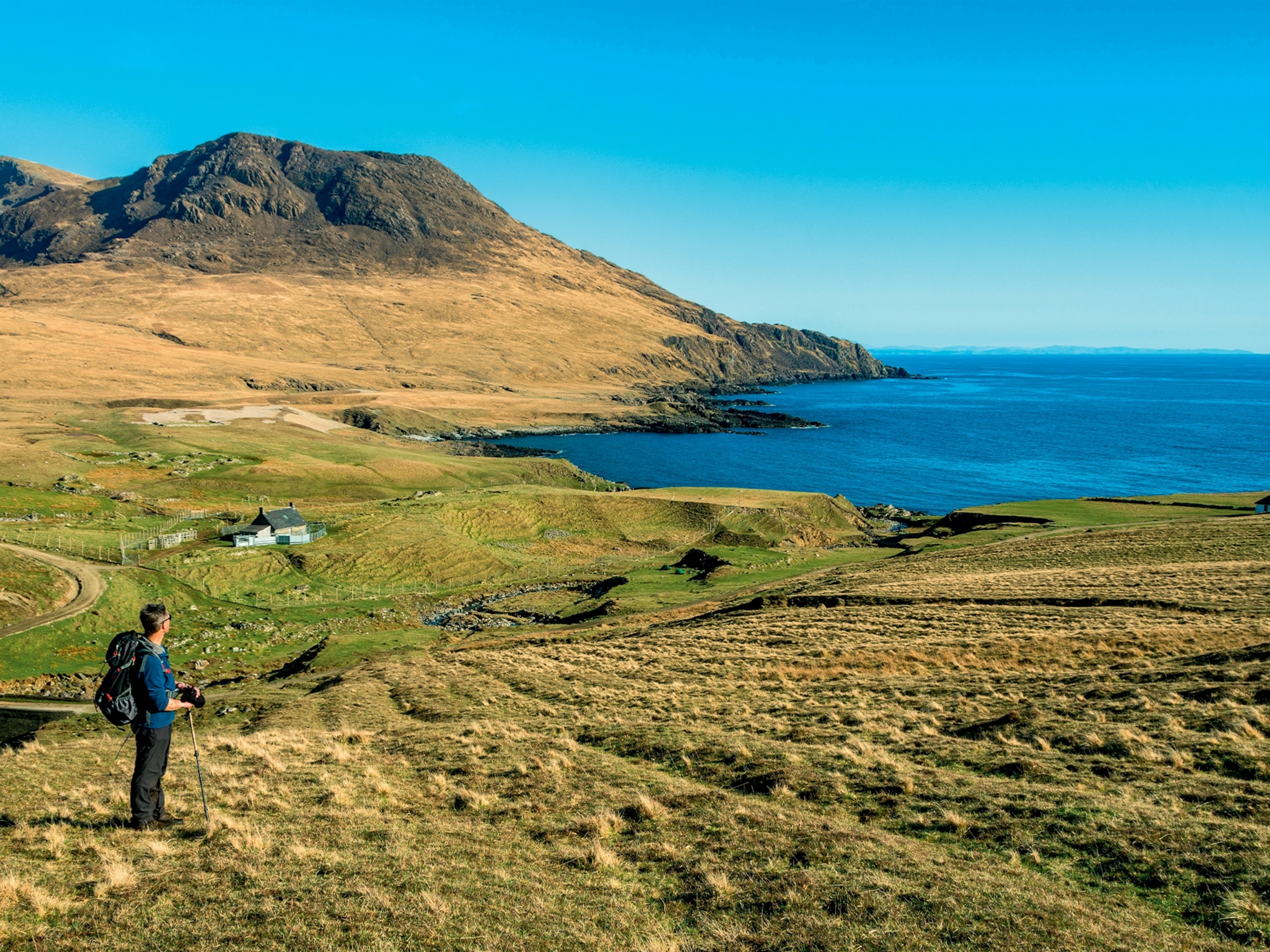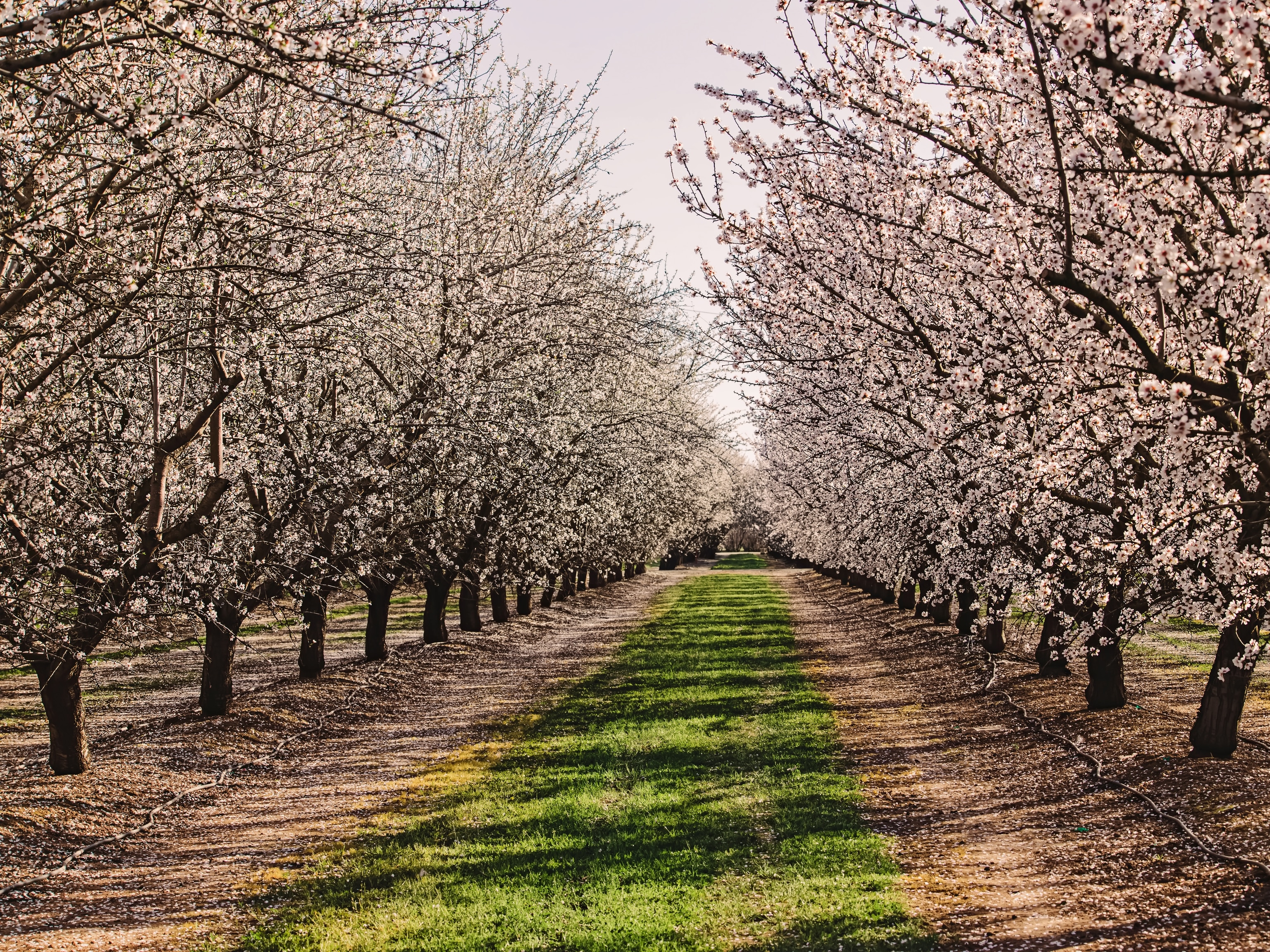15 of the best UK destinations for spring travel
From the Yorkshire moors to the Cornish seaside, these alluring spots make for a classic British holiday.
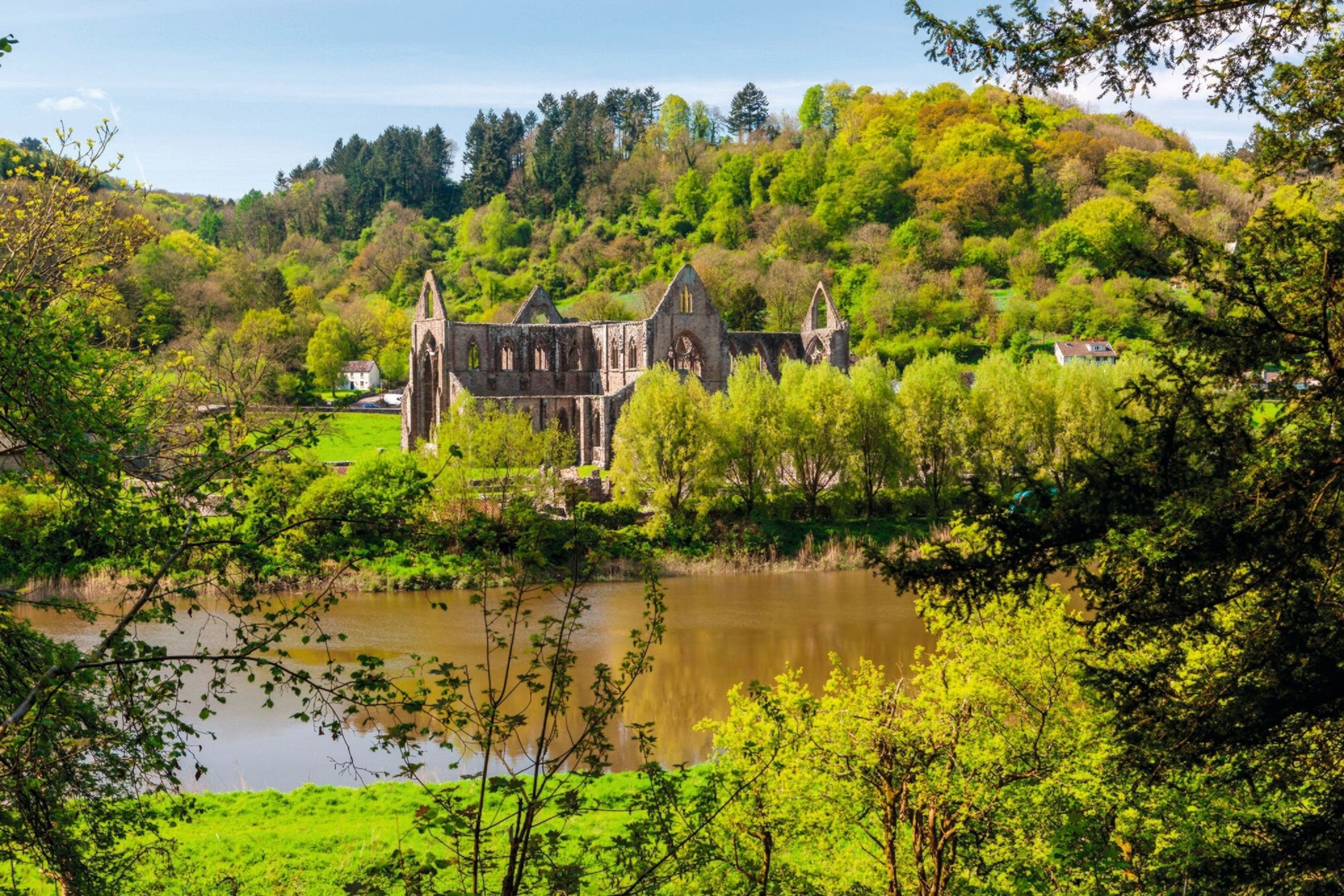
Whether you’re longing to fill your lungs with sea air or are looking to spend some quiet days rambling through the countryside, these UK destinations are all perfectly suited to spring travel. From the ‘Queen of Welsh resorts’ to the region that’s home to the UK’s rarest butterfly species, these are 15 of the best destinations to escape to this Easter holiday and beyond.
1. North Staffordshire
The West Midlands county of Staffordshire was once a powerhouse of innovation, taking 18th-century Britain into a ground-breaking future with its nascent pottery, glass, iron, coal and brewing industries. The powerhouse tag may no longer quite ring true but the heritage remains, with its canal system just one welcome leftover from the period. The overall impression these days is decidedly more rural than industrial. The moorlands and dales of the Peak District extend into its northeastern fringes, while gentle valleys and hills, punctuated by stone-built villages, define much of the region elsewhere. Near the centre of England; come for easy activities, unique accommodation and a smattering of that industrial heritage.
(Discover North Staffordshire, the historic pottery hot spot in the heart of England.)
2. Wiltshire
Wiltshire may well be the most mysterious county in England. It’s home to the country’s densest concentration of Neolithic remains — among them, the blockbuster that is Stonehenge — and a scattering of 13 giant white horses carved into hillsides and visible for miles around. Ask what they’re for or why they’re there and the response is commonly a shrug and a ‘who knows?’.
The attractions lose none of their appeal for being enigmatic, however. This is a largely rural county of chalkland hills, where mist clings to valley floors and lingers in woodlands long after the sun has risen — myth and fable seem in-built into the landscape. And when you’re done pondering the questions left to us by our ancient predecessors, there are inviting pubs to retreat to in pretty villages. Nothing dispels a sense of mysticism quicker than a pint of local ale enjoyed by the fireside.
(There's more to this English county than just Stonehenge.)
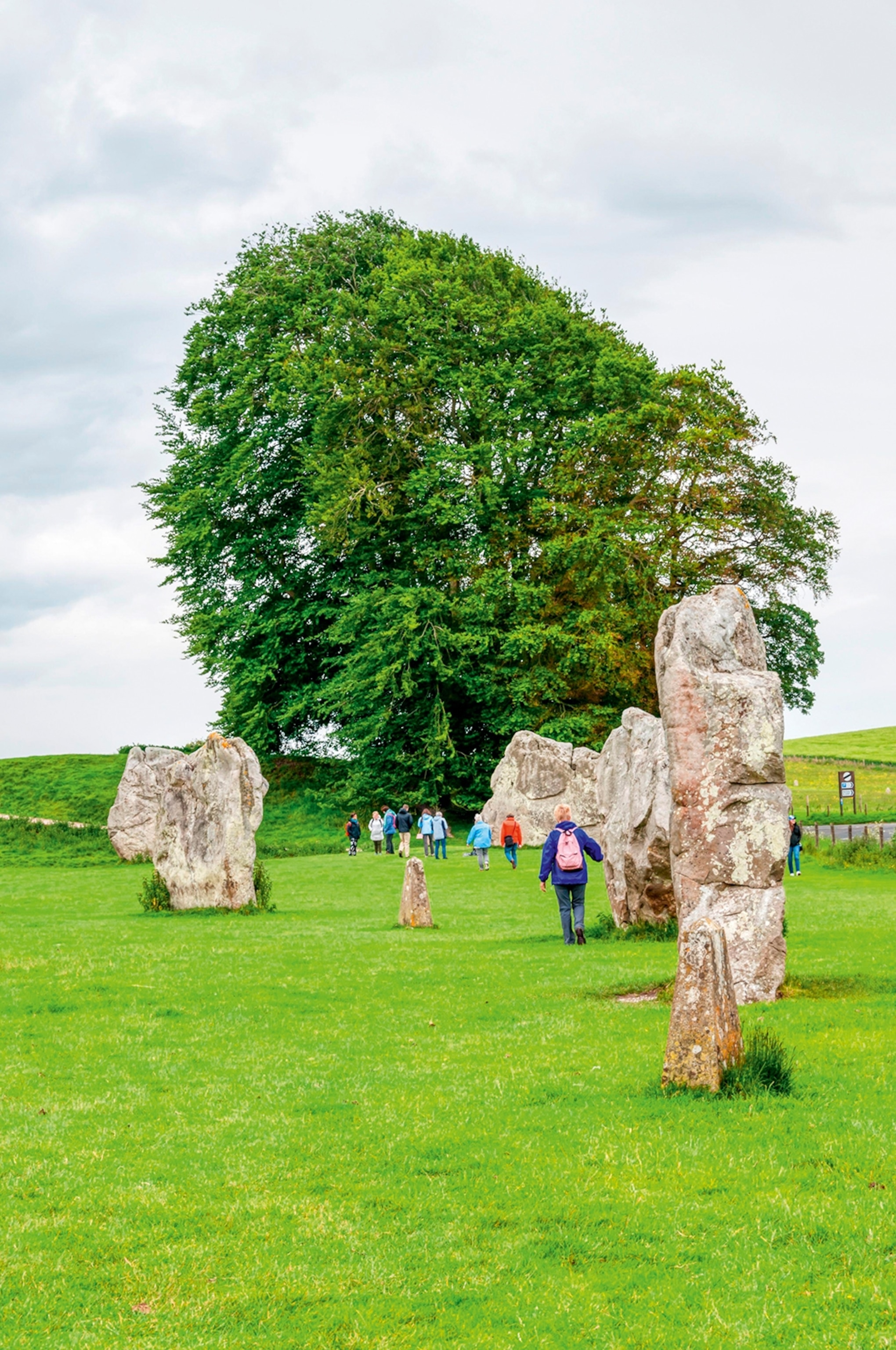
3. St. Andrews, Scotland
In medieval times, the bones of St Andrew, patron saint of Scotland’s Pictish people, were brought to a small, wind-worn town atop a sandstone plateau in Fife, on the country’s east coast. These relics conferred such celebrity that a bishop took up residence, a great cathedral was commissioned and the town — now known as St Andrews — became the country’s ecclesiastical capital.
Today, St Andrews’ ruined, roofless cathedral yawns at the heavens, and parts of the town’s medieval castle have tumbled into the sea. You might think this would dent St Andrews’ appeal — quite the opposite. These skeletal remains give the town’s coastline a spectral beauty that’s best appreciated in winter, after the golfers that descend each summer have cleared out.
Another draw is that Fife’s spirits industry — once feared dead — has reawakened, with whisky and gin distilleries putting the region back on the map. The best place to try them is at a traditional pub or by a hotel fire, after a windswept walk between desolate beaches.
(What to see in St Andrews, Scotland—beyond the golf course.)
4. Weymouth
Strung along a bay in southwest England, Weymouth still possesses many of the characteristics that once charmed Georgian and Victorian holidaymakers: the children waving from bulb-lit carousels, the boats slung with nets of rock oysters, the fisherfolk unloading the day’s catch in a harbour backed by pastel-hued houses. In many ways, it’s the quintessential English seaside town — only with a clifftop fortress and a World Heritage Site thrown in for good measure. Set on the UNESCO-listed Jurassic Coast, a 95-mile stretch of fossil-rich cliffs and beaches straddling Devon and Dorset, it serves as an ideal base for those looking to delve into the geology of the surrounding landscape. Wind-lashed isles are within easy reach, while exhilarating boat trips along the coast offer a fresh perspective on Dorset’s marine life and otherworldly rock formations.
(Welcome to Weymouth, the British seaside resort with a twist.)
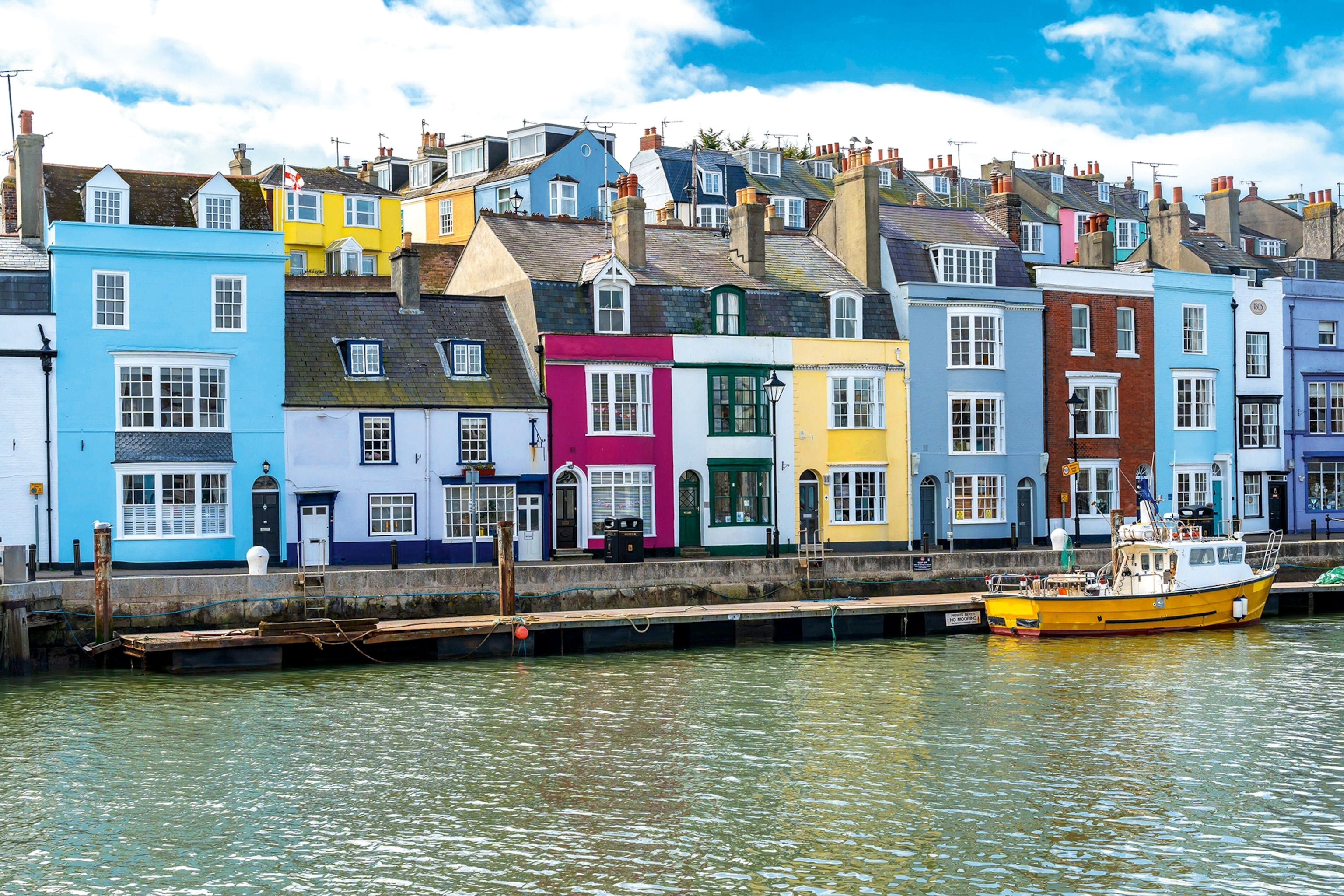
5. North Pennines Range
Set between the national parks of the Lake District, Yorkshire Dales and Northumberland, the green mountains of the North Pennines rise like dragons’ spines to form a rugged dividing line across the country. The region offers some of the finest qualities of its more famous neighbours — glorious hillwalking, ancient ruins and industrial heritage — but is a quieter alternative for those seeking an adventure in the wilds of northern England.
A region of gushing cascades and gusty slopes, it’s not hard to see why the area — a National Landscape and UNESCO Global Geopark — has long stoked the fires of the imagination. Folklore tells of red-cloaked ghosts that dwell in waterfalls; demonic river sprites; and spectral horse-drawn carriages rattling along country roads. But it’s in the realm of reality, not myth, that this region is at its most remarkable. Amid the natural beauty of its landscapes, humanity has made its mark in spectacular ways, with the scars of old quarries and lead mines now havens for wildlife. The North Pennines also make a quiet base from which to explore the longest and best-preserved stretch of Hadrian’s Wall, one of the most remarkable Roman monuments, just across the border in Northumberland.
(This mountain range should be on every tour of northern England.)
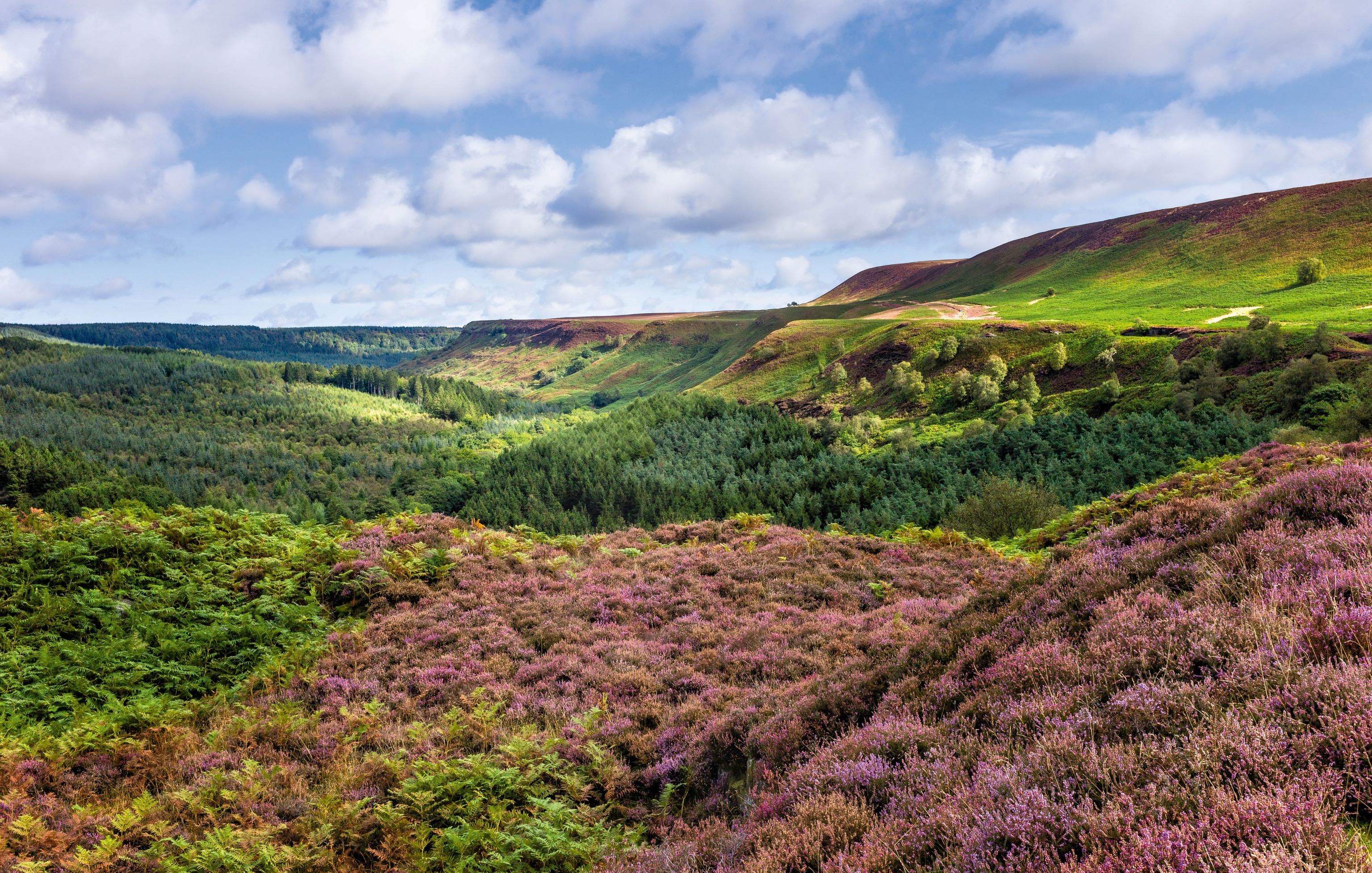
6. North York Moors
Driving into the North York Moors National Park is a bit like delving into the pages of The Secret Garden — it was indeed these heather-clothed moorlands that inspired Frances Hodgson Burnett’s 1911 novel. Granted, this pocket of North Yorkshire might not be such a secret — its hiking paths, country pubs and historic villages have magnetic appeal, and for good reason. Throw in the Howardian Hills Area of Outstanding Natural Beauty (AONB), which sits on the southern edge of the national park, and you’ve got yourself one of the UK’s most idyllic getaways.
(Follow in the footsteps of monks and literary giants on the North York Moors).
7. Llandudno
A Victorian favourite once billed as the ‘Queen of Welsh resorts’, Llandudno has kept much of the charm that made it so popular. The curving promenade framing Llandudno Bay, the aroma of fish and chips wafting in the air, pastel-coloured art deco houses lining the seafront and old-fashioned amusements on Llandudno Pier all combine to deliver a quintessential British seaside break. The town also serves as gateway to a wealth of natural attractions in Eryri (Snowdonia) National Park and water-based adventures in Colwyn Bay. And a stay in Llandudno can be combined with a trip to Conwy, across the river of the same name, which has a mighty castle and Britain’s smallest house.
(A break in Llandudno, a vintage Welsh beachside resort with enduring appeal).
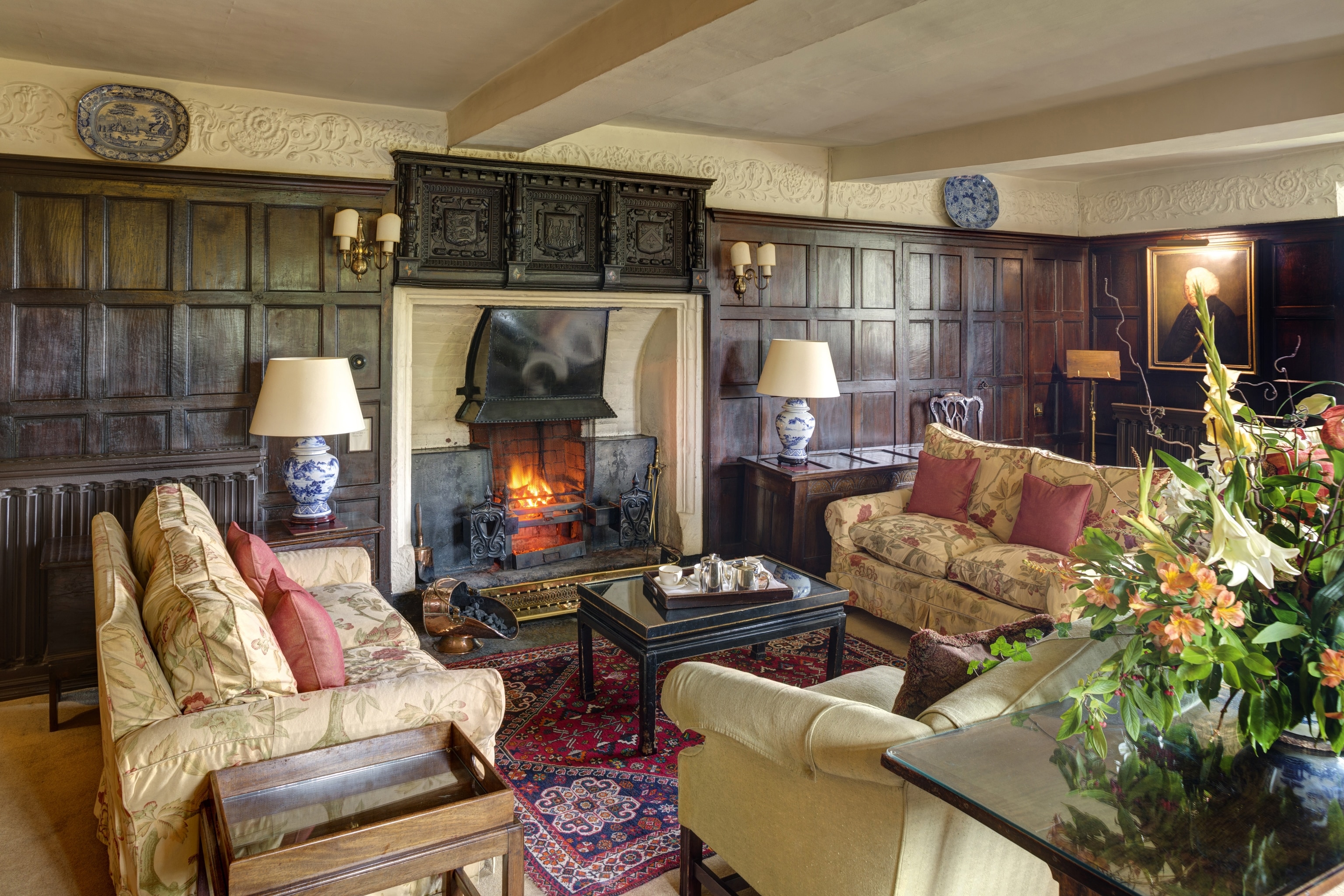
8. Stour Valley
The beauty of the River Stour and its valley has long attracted artists, not least John Constable, whose paintings gave the area its ‘Constable Country’ sobriquet. This slice of Essex and Suffolk countryside, with its mills, vineyards and walking trails, continues to inspire to this day. In Dedham, one of its most popular villages, the Art & Craft Centre has work from over 60 artisans and collectors for sale; to get involved, join a painting course at the 15th-century manor house of Dedham Hall.
(A UK break in the Stour Valley — the scenic, underexplored corner of Essex).
9. Rutland
It has the country pubs, antique shops and honey-hued market towns of the Cotswolds, and the chilled, waterside vibe of the Lake District, and yet many haven’t heard of it. Rutland, England’s smallest county, takes its Latin motto to heart: multum in parvo, much in little. Midway between Cambridge and Nottingham, in the East Midlands, with the 3,100-acre inland sea of Rutland Water at its heart, it’s a place that feels made for a restorative weekend break — and with countryside bolthole The Barnsdale getting a recent makeover, there’s never been a better time to go.
(A UK break in Rutland — waterside adventure in England's smallest county).

10. Winchester
Alfred the Great made Winchester England’s first capital in 871, and the Hampshire city long remained at the centre of the action. Narrow streets of medieval and Georgian buildings hint at its past. The nearby South Downs National Park can also be accessed via the South Downs Way. A 100-mile-long walking and cycling route, the trail starts in Winchester and stretches to Eastbourne.
(A UK break in Winchester: history and South Downs hikes in Hampshire).
11. Falmouth
Visit Falmouth and you’ll experience a traditional Cornish seaside town embracing its creative side. A pageant of history has sailed through its deep-water harbour — some of it illicit, with ties to piracy in the 18th century. Locals remain tethered to the tides, with a family-run fishery supplying restaurants, and paddleboarders gliding down the estuary.
But what really sets Falmouth apart is its brush with creativity, buoyed by the students enrolled at its two universities — one among the UK’s best for the arts. Indie theatre, music, comedy and art exhibitions fill small venues' listings, while the annual (and free) sea shanty and oyster festivals are firm fixtures on locals’ calendars.
(A UK break in Falmouth: Cornish maritime history on the South West Coast Path).

12. Arnside and Silverdale
Many bypass Arnside and Silverdale, touching Morecambe Bay to the west and the Lake District to the north, on their journey along the M6 motorway. Detour to this AONB — one of the smallest in the UK — and you’re in for a surprise. The region spans just 29sq miles, but its diversity belies its humble size, with woodland, limestone hills and a coastal area all linked by a network of paths. Trails start right from Arnside station, which has direct rail connections to Lancaster and Manchester and e-bikes available for rental at Ease E Ride.
(A UK break to Arnside and Silverdale, the little-known region of natural wonders).
13. Monmouthshire
Monmouthshire is a stunner: this county in southeast Wales packs a punch with moody mountains, market towns, meandering rivers and Michelin-starred restaurants. It encompasses some of Britain’s best scenery, spanning the dramatic Black Mountains in the north to the Eden-esque Wye Valley, an AONB that sprawls over the border into England, making it an excellent getaway for lovers of the outdoors.
The county’s length is stitched with walking trails — including the Wye Valley Greenway, which opened in 2021 — that take in pastoral fields, plump forested hills, scores of sleepy castles and the majestic monastic ruins of Tintern Abbey on the River Wye’s banks. Laid-back towns peppered across Monmouthshire include floral Usk, mediaeval Monmouth and the creative and culinary hub of Abergavenny. The latter is lined with indie shops selling art supplies, wild blooms, fermented sourdough loaves, Welsh-made children’s clothing and small-batch coffee. It’s also home to a clutch of celebrated restaurants that plate up knee-slappingly good grub — the town also hosts the renowned Abergavenny Food Festival each September.
(A UK break in Monmouthshire: Tintern Abbey, Michelin-starred food and hiking).
14. Forest of Bowland
Sandwiched between the great cities of Manchester and Liverpool to the south, and the beauty spots of the Lake District and the Yorkshire Dales to the north, the Forest of Bowland is every bit as enchanting as its more famous neighbours. This is a land with a deep history peopled by Vikings, witches and kings; where the patchwork fields, coaching inns and pretty villages evoke a sense of time out of mind.
A designated AONB, its gorgeous landscapes are more diverse than its name suggests, with the woodlands of the Lune Valley ascending to the wild moorlands of the Bowland Fells. The new Eco Escapes initiative connects them with local food producers, pubs and B&Bs by public transport, meaning it’s never been easier to explore the region in an eco-minded way.
(What to do in the Forest of Bowland, Lancashire).
15. Whitley Bay
Whitley Bay was once best known for its caravan parks and fairground attractions, but things have changed over the past decade. Major refurbishments have blown the dust off this arty corner of Tyne and Wear, helping to place the old seaside favourite firmly back on the map.
The mile-long sandy beach, which has been Blue Flag-certified every year since 1994, is a big draw. Brave locals swim and paddleboard year-round, and surfers are well served by North Atlantic swells.
(A UK break in Whitley Bay: Northeast seafood, beach strolls and the Spanish City).
